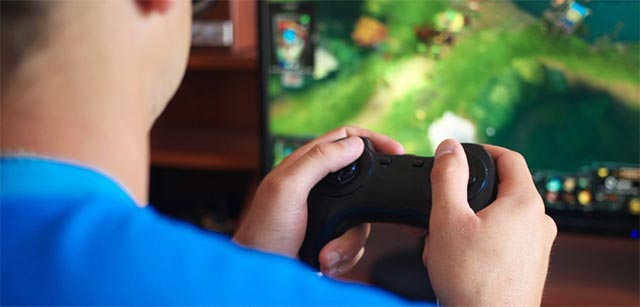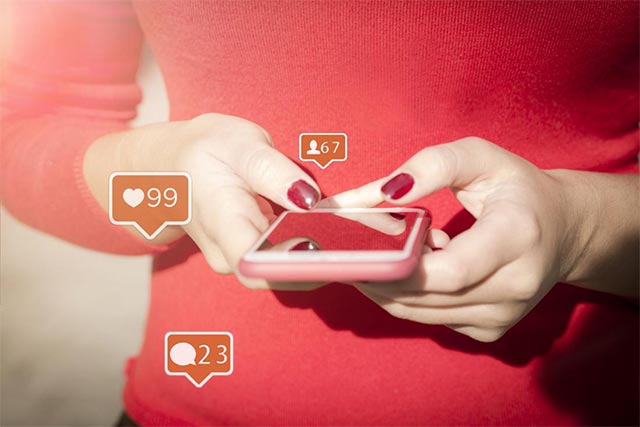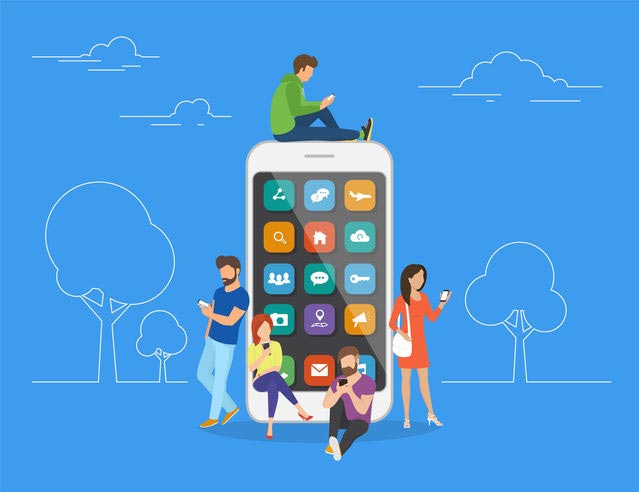Brain research explains the difference in the impact of technology on men and women
Over the past decades, countless studies have been conducted by leading academics trying to prove whether there is a clear difference in neurological characteristics between cisgenders. gender similar to the gender they were assigned at birth) or not. And while some claim no big difference, others oppose, such as arguing that women are more likely to engage in prosocial behaviors than men. . Socially positive behaviors are positive behaviors that affect society well, such as helping and cooperating with people, and this is due to differences in brain structure and function. set between 2 sex.
- 5 big questions about the brain-connecting technology that Elon Musk is developing at Neuralink, the transcendence or a dark scenario?
 Women are more likely to engage in prosocial behaviors than men.
Women are more likely to engage in prosocial behaviors than men.
And this difference is thought to be extremely closely related to the impact of technology on men and women. An article by Julie Jargon posted on September 24 in The Wall Street Journal highlights a statistic that shows a clear difference in the way young people interact with today's technology. In general, most guys are often attracted to video games, graphic design and especially technology devices, while girls seem to spend more time surfing the web, using the network. social, movie and almost 'blind' when it comes to technology hardware devices.
Earlier in 2017, a field survey conducted by the Pew Research Center showed that boys and girls have very different perceptions and thoughts about the amount of time they spend interacting with technology. , and especially the type of technology they spend most of their time interacting with.
- The notion that 5G is harmful to the brain is completely wrong!
 Boys often spend more time playing video games, while girls prefer to use social networks
Boys often spend more time playing video games, while girls prefer to use social networks
For example, 47% of girls between the ages of 13 and 17 are said to have spent too much time on social media. On the other hand, 41% of teenage boys say they spend most of their free time playing video games, compared to 11% for girls. Thus, it is possible to see a clear difference in the way technology interacts between the sexes, especially among young people.
However, the Pew Research Center survey has not yet been able to figure out which mechanism makes this difference. To address this question, in 2018, a team of researchers from different universities in China sat down to find gender-related differences in the opposite nerve responses. with gaming. Using magnetic resonance imaging (MRI) machines, the team measured brain responses in some teenage boys and girls, focusing primarily on the parts of the brain. Ministry is related to the feeling of "addictive" and the feeling of "enjoying, satisfying".
- 7 brain training exercises to help you improve memory and maintain a clear mind
 Men may be more susceptible to gaming disorders than women
Men may be more susceptible to gaming disorders than women
The results showed that when men viewed images of other people playing games, the part of the brain involved in the addictive feeling was slightly stimulated slightly compared to the same position in the female brain. . According to the researchers, this result shows that men are more likely to suffer from biological disorders related to gaming than women, they are more excited when they see the games advertised on. network - that's what game developers are exploring, by deliberately designing addictive games.
Although girls rarely show signs of gaming addiction (of course there are exceptions, but not so common), they are more likely to get addicted to using social networks than men. According to a separate study conducted by the Pew Research Center, about 78% of women in the US use social networking at least once a day, compared to 65% of men who say they have the same habit.
Another ScienceDirect study, titled 'Social Media Use and Adolescent Mental Health', showed that girls Girls are prone to depression and anxiety after spending too much time using social media, while this situation is completely unrecognized in boys.
- Sensory compensation mechanism and the magic of the brain.
 Women are at greater risk of becoming depressed after spending too much time on social networks than men
Women are at greater risk of becoming depressed after spending too much time on social networks than men
Returning to Julie Jargon's article in The Wall Street Journal, the author partly explained the cause of depression in women when they used it too often, which stemmed from women. It always feels like I've missed something, even an obsession. This makes women feel more pressure than men to keep up with all the updates of friends, or information about discount codes, promotions on social networks. This is also combined with the fact that social networking platforms such as Facebook and Instagram are designed to keep users engaged, addicted, meaning their use of social networking sites. , over time, will become an almost indelible routine.
'There is always a long list of addictive design apps we record and keep updating. These are applications that make money from stealing our attention, making us spend too much time and almost impossible to live without them, especially to go to social networking platforms like Facebook. , Instagram, and some other dating or news apps. Any free app can be addictive, '' said Catherine Price, a science journalist and author of the popular book 'How To Break Up With Your Phone'.
- Answering these 10 puzzles in 7 seconds proves that your brain is very special!
 Social networking applications like Facebook and Instagram are designed to keep users engaged, addicted,
Social networking applications like Facebook and Instagram are designed to keep users engaged, addicted,
According to statistics, on average, people typically spend 4 hours a day looking at smartphone screens, and most of that time is spent on addictive free apps. These apps are designed to manipulate our brains, which in turn keeps us lingering for as long as possible, and the more time users spend on the app, the more developers can get. be more profitable. Everything you see on an application is the result of a series of guiding elements, and they are carefully designed to keep you engaged for hours.
Take a simple example of a social networking site like Facebook that knows how to get users' attention, which is a notification badge when new messages or content you're interested in are posted. This badge is always red, the most interesting color, as well as the highest sense of excitement and curiosity that makes you forced to click, even if you know that the message is not too important right now.
- How do smartphones change the human brain?
 Technology addiction can be completely eliminated if we understand the nature of addiction
Technology addiction can be completely eliminated if we understand the nature of addiction
Technology is exploiting very effectively man's biggest weakness: Addiction. It makes us irritable, annoyed, and even frustrated not to use it. However, if there is a good awareness of how addictive factors affect our behavior and relationships with technology, it will be much easier to regain balance.
You should read it
- Scientists read the bird's brain and know what it is about to sing
- [Infographic] Time to narrow the gender gap in Technology
- Here are 15 women who have made an important contribution to the innovation of technology that you should know
- With this technology, you can create your own virtual reality face with just one photo
- Summary of the hottest tech news of November 4
- 7 tech errors 'bad without bad'
 What is 'social jet lag' syndrome? The harm of this syndrome to human health like?
What is 'social jet lag' syndrome? The harm of this syndrome to human health like? Not dieting, this is the new method of preventing obesity
Not dieting, this is the new method of preventing obesity Conflicts surrounding the sale of $ 30 bath water bottles and interesting questions about DNA
Conflicts surrounding the sale of $ 30 bath water bottles and interesting questions about DNA The mechanism of sensory compensation and the magic of the brain
The mechanism of sensory compensation and the magic of the brain MIT's imaging techniques shed light on brain activity
MIT's imaging techniques shed light on brain activity Malaria parasites die quickly in blue dyes
Malaria parasites die quickly in blue dyes